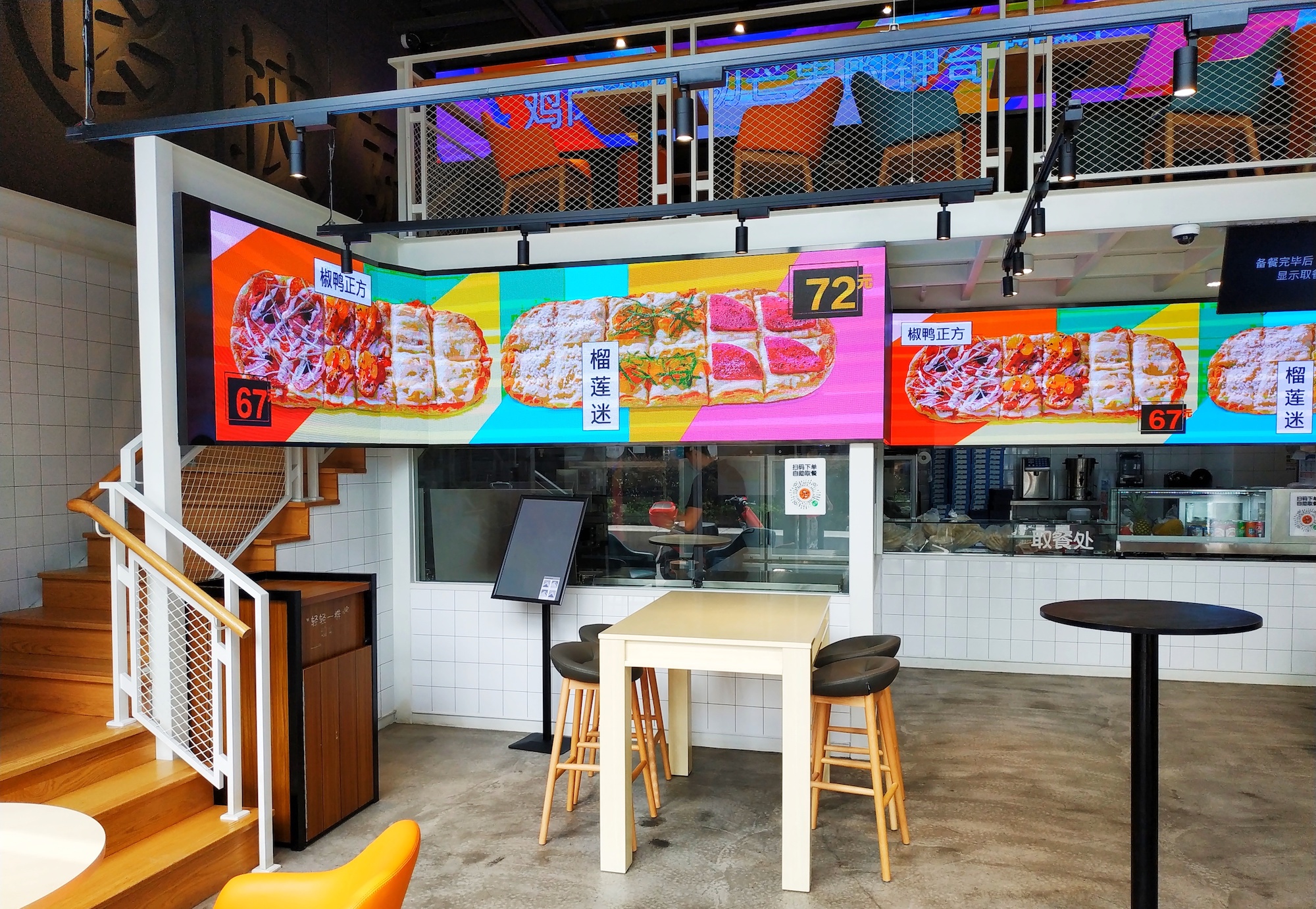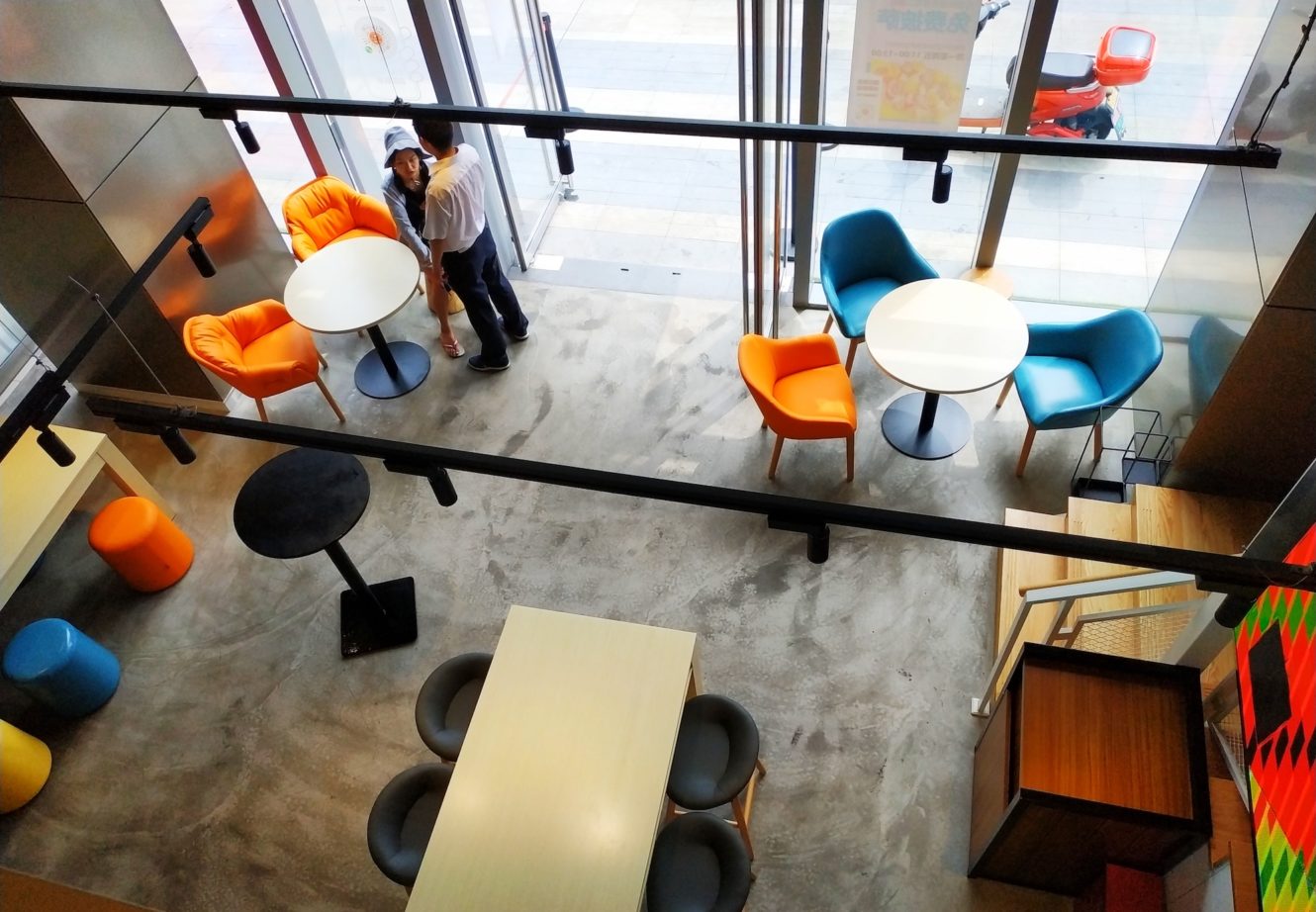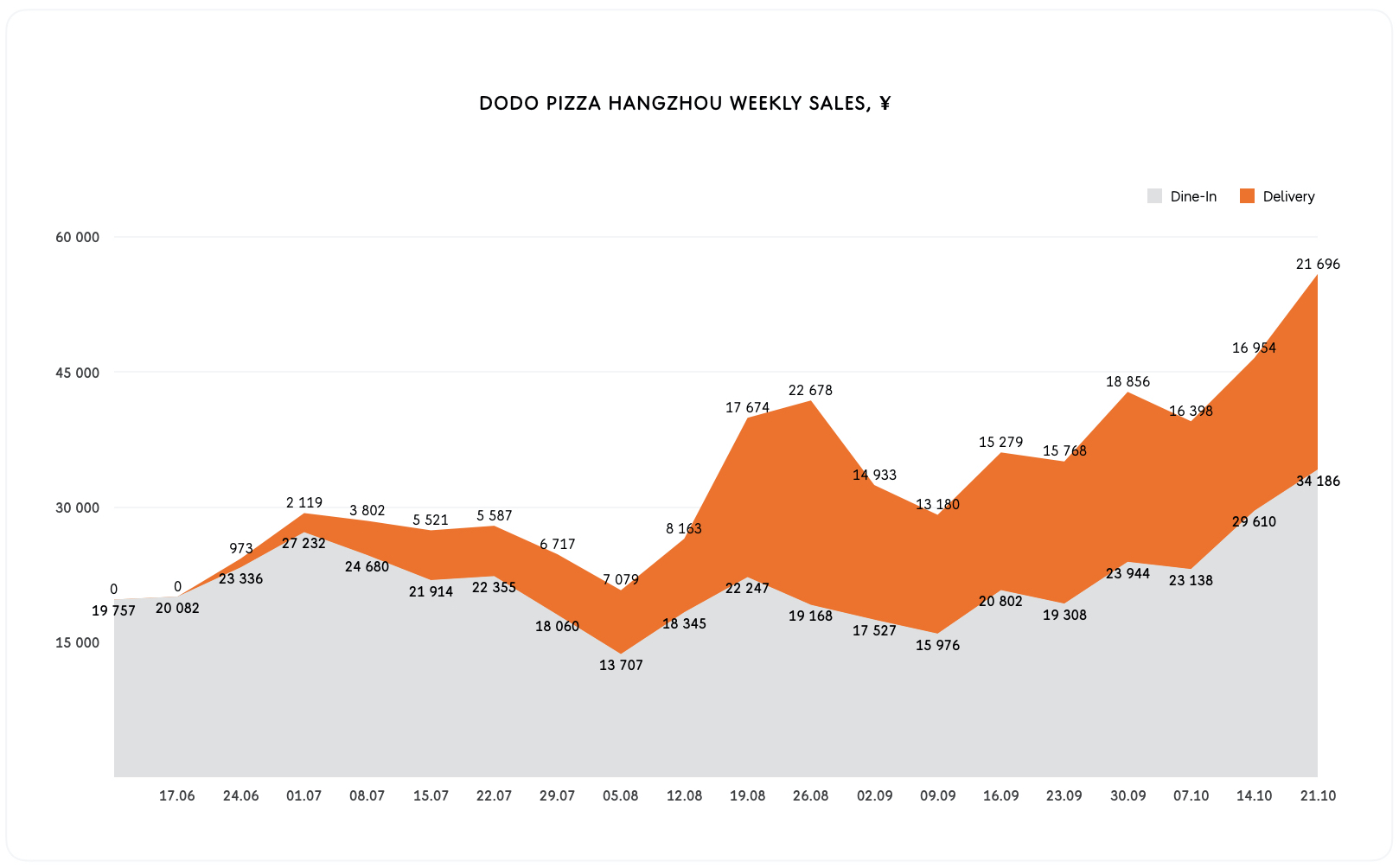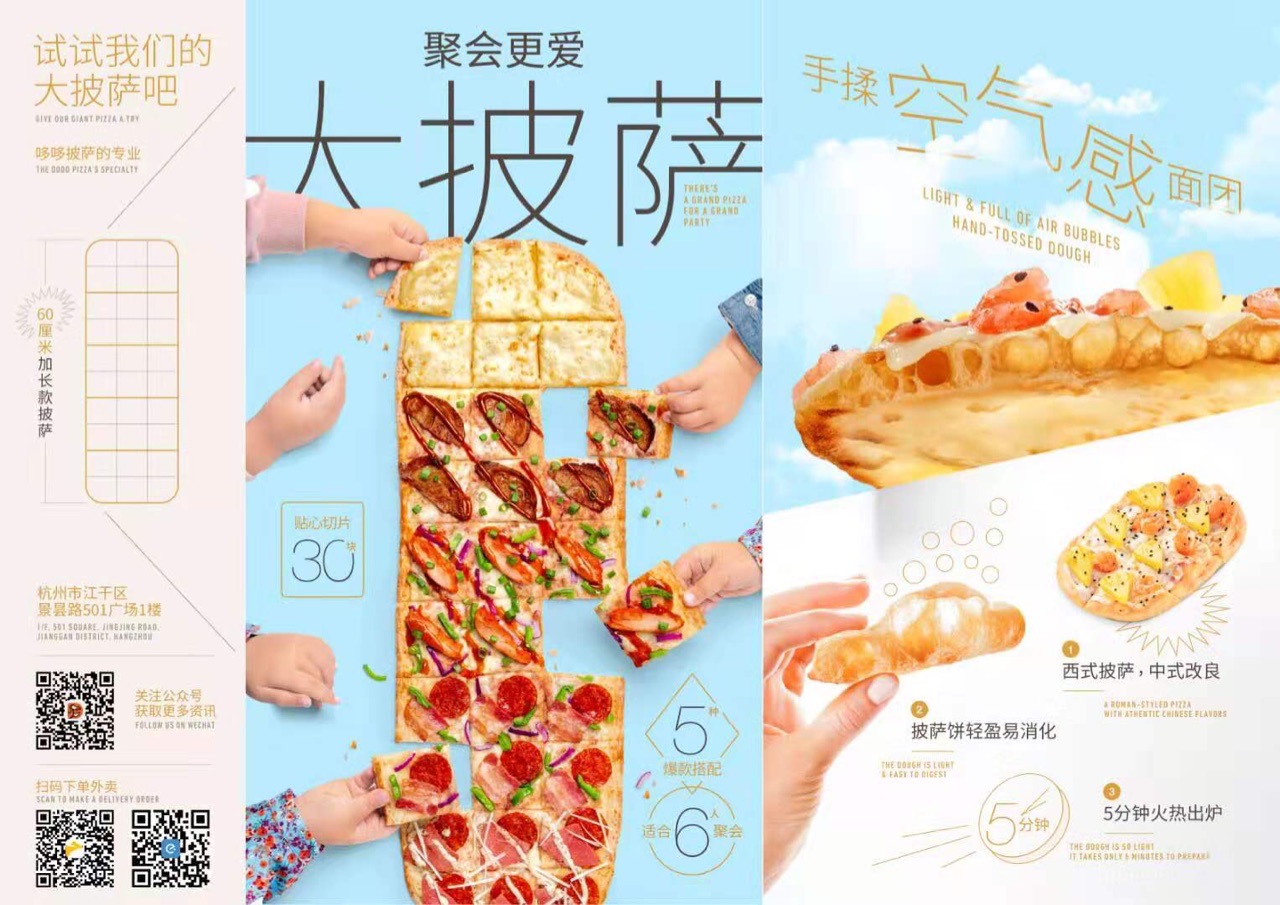
Closing in on 10,000. How things are going at Dodo Pizza Hangzhou
25 October 2019
In mid-July, our team in China set an ambitious goal—to achieve average daily revenue of ¥10,000 in our pilot pizza shop in Hangzhou by the end of September. Where were we at that time? Somewhere around ¥4,000.
We’d only just launched delivery (and connected to delivery aggregators), and our sales in the dining area were growing, but slowly. We conceptualized our goal, estimated the breakdown of revenue across different channels, and decided that dining area revenue was to be increased by a factor of 2, and delivery by a factor of 4. All in all, those numbers seemed reasonable enough, given that we were just starting out. Down the line, sales would be distributed 68% / 32% in favor of the dining area, which was better than betting on delivery and being dependent on aggregators.
Why were the numbers reasonable? We opened the Hangzhou pizza shop in spring 2019 and were planning on refining and enhancing its format from the start. In the dining area, our next steps were obvious:
- We needed to revamp our furniture to create seating areas on the ground floor and make it more comfortable for customers on the first floor.
- We needed to use screens above the kitchen and serving areas as a videomenu, showing our product as much as possible, so people would clearly see that they were in a pizza shop.
In addition, we decided to launch our own drinks, banking on an average check increase and attractive combos.
As for delivery development, the essential approach was to promote our pizza shop aggressively via aggregators, setting a special (and very low) price on our bestselling product (Durian Pizza) for new customers and investing in the increased visibility of our pizza shop through search results and recommendations. The logic was simple—a person would see an interesting but unfamiliar product, its low price would eliminate the purchase barrier, they would try our top pizza, and after that, it’s simply a question of customer retention.
I could delve at length into what has gone according to plan and what hasn’t—in reality, nothing has.
As we all know, an idea is one thing, its implementation is another, and the result depends on the latter. Let’s go back to our goal—an average of ¥10,000 a day by the end of September. That would mean reaching ¥10,000 a day at least once. Did we succeed? We did, actually, though that only happened on October 19. But first things first.
In delivery development, we’ve managed to reach another level entirely—average daily revenue in July was ¥637, in September, ¥2,143, which was 3.4 times higher. In terms of the number of orders, we approached parity with other big players in the area. However, that came as a result of serious investment in the delivery channel, and the problem of efficiency and customer retention will have to be solved down the road.
The most interesting and important part is dining area development. It’s complicated. We’ve refurbished the interior, but were met with some obstacles constructing the furniture (the expectation-and-reality problem in China is a story of its own). We’ve also updated our videomenu—it’s almost completely static now and gives a comprehensive idea of our product.

We pulled our signature drinks from the menu just two weeks after we introduced them. Creating a product that would be competitive in the hyperdeveloped drinks market in China, form a part of an attractive combo, and not “clog up” the production process in the pizza shop is a tremendously difficult task. We tried it and discovered that every criterion raised questions, so we decided to shelve the project.
We’ve changed our approach to promotions. From the moment our pizza shop opened in May till the end of August, we ran a free pizza promo—every new customer on a weekday could get a free pizza if he or she ordered during a certain two-hour period. That offer was very useful: we aggregated a lot of positive reviews on Dianping (the Chinese counterpart to TripAdvisor), and there was regularly a large line in front of our pizza shop (that’s one of the main success indicators in China).

However, as the numbers show, this offer didn’t bring us substantial growth in our customer base—at about one month in, customer retention was only around 3–5%, whereas retention among customers that had actually bought their first pizza settled around 12–15%. So we’ve replaced the free pizza with a “50% discount on your first pizza order” offer. This is available to first-time customers with no time restrictions. Its goal is to lower the barrier for purchasing a new and unfamiliar product.
Why am I always talking about pizza as an unfamiliar product? Two factors are important here. Firstly, the restaurant industry in China is almost completely based on Chinese cuisine. According to one study, the market share of Chinese cuisine in full-service restaurants may reach 84%, and in fast food, even 90%. If you look at the menu of a local KFC, you’ll barely recognize it, especially at breakfast. In this context, pizza is a somewhat alien concept. And secondly, our product can hardly be called classic pizza. We’ve got unique dough, interesting recipes, and a quick production process. Basically, we’ve undertaken the most difficult marketing task ever—making a customer form a new habit in relation to a new product. And that takes time.

By the end of September, our average daily revenue in the dining area was ¥2,675, which was even a bit lower than in August (by 2%), and we’ve certainly not grown twofold. The number of orders actually increased significantly (by 30%), but the 50% discount offer, understandably, affects revenue a lot. Average daily revenue for the whole pizza shop in September amounted to ¥4,818, which means we’ve only reached 48% of what was planned. But that doesn’t mean we aren’t growing.
In October, our average daily revenue is already almost ¥6,000. We are being helped by good weather, the Chinese holiday calendar, customer attraction due to neighboring shopping centers, growth in our customer base, and a stable level of retention. The one factor working “against” us is the perception of pizza as a niche product. Nonetheless, we are closing in on our goal, slowly but surely. At least on one day we cleared the ¥10,000 mark, and now we need to repeat that result.
Next, we’re planning to update our menu (with new pizzas and snacks), create and implement a visual design that will help integrate all points of customer contact and make a more full and meaningful experience for our guests, and, most importantly, launch a second pizza shop and test a new format there—a shop of only 20 square meters.
